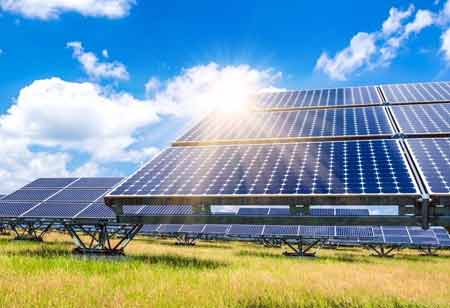Thank you for Subscribing to Energy Business Review Weekly Brief
Expanding Solar Photovoltaic Applications
BAPV is an arrangement of photovoltaic systems and solar cells mounted on roofs or building surfaces.

By
Energy Business Review | Monday, May 22, 2023
Stay ahead of the industry with exclusive feature stories on the top companies, expert insights and the latest news delivered straight to your inbox. Subscribe today.
Despite its current applications, PV technology continues to advance and has many bright prospects for the future.
FREMONT, CA: Photovoltaic technology has many uses to improve human life. Until today, this technology has been used by both industry and ordinary people. However, advancements in this technology continue beyond its current applications, and many more are to come. New applications and improvements are being made to photovoltaic technology regularly. It allows solar energy to be converted into electricity, energy storage systems to be developed, and more affordable and efficient energy systems to be developed. In addition, it can be used to power new technologies, such as electric cars and home energy systems, which can reduce emissions and improve the environment.
Photovoltaic technologies are useful in a wide variety of new applications.
Building-attached photovoltaic (BAPV): As the name implies, BAPV is an arrangement of photovoltaic systems and solar cells mounted on roofs or building surfaces. Although it may be aesthetically problematic, this is aimed at avoiding shading to the greatest extent possible. Several pieces of equipment are also required for this application, including those needed for mounting.
Using photovoltaics can allow the vehicle battery to be recharged without the need to be connected to a charging station.
Luminescent solar concentrator photovoltaic (LSC PV): It is typically comprised of transparent optical light guides made of polymer or glass that contain luminophores, along with photovoltaic (PV) solar cells installed along one or more of the light guide's edges or sometimes at its back. To generate electricity, small photovoltaic cells intercept sunlight and convert it into electricity. In addition to producing electricity in low-light conditions, LSC can also be integrated into architectural structures, especially as transparent elements, due to its ability to produce electricity. Whether integrated with houses and buildings as colored windows, leaf roofs, smart windows, or as noise barriers, parking sheds, or noise barriers, LSC's versatility is undeniable.
Vehicle-integrated photovoltaic (VIPV): Although photovoltaic technology is mostly used in grid-connected applications, a new application could be integrating photovoltaic into battery electric vehicles, creating a VIPV. Using photovoltaics can allow the vehicle battery to be recharged without the need to be connected to a charging station. VIPVs can improve transportation sustainability and are cost-efficient. In addition to solar cars, buses, spacecraft, boats, crewless aerial vehicles(UAV), trains, hybrid airships, autonomous undersea vehicles(AUV), bikes, etc., they can also be incorporated into solar cars, buses, spacecraft, boats.
Solar street lights: Solar cells can also be installed on street lights or roadways as a power supply. The installation usually includes an oversized battery and power at night or in low-light conditions. The system can perform autonomously in these conditions for up to five days. Additionally, autonomy allows the system to function without constant connection to the grid, even off the grid, for a while.






